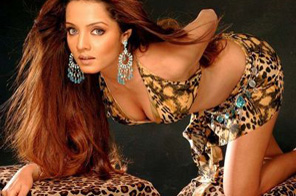Bollywood heroines phase out Mummy-ji chaperones
MUMBAI: They were once a feared presence on set, keeping an eye on their daughters to protect them from roving eyes or hands. But the days of Bollywood heroines being chaperoned by their mothers are numbered.
"Mummy-ji", as everyone from the director downwards always called her, is becoming a thing of the past, as actresses in India's popular Hindi-language film industry prefer to forge and manage their careers alone.
"I think the prime reason is because our industry has become more corporate and sleazy people have disappeared," said Celina Jaitley, the daughter of an Indian army colonel, whose first break was in the 2003 hit film "Janasheen".
"Heroines are more confident to decide their lives on their own, unlike in the past," the 29-year-old former Miss India added.
Bollywood has changed almost beyond recognition in recent years, not least in that it is now considered a profession worthy of girls from respectable families.
But that wasn't always the case. When film-making first began in India in the early 1900s, there were few actresses at all, leaving men to play the female roles.
Later on, well-known female singers and dancers began sending their daughters to act. Then, in the 1950s and 1960s, many girls from poorer families entered Bollywood.
Even in the 1970s, when an increasing number of young women from more high-profile, urban backgrounds got into film, it was still considered a socially inappropriate profession for a middle-class woman.
Chaperoning by "mummy-ji" persisted until the 1990s, fuelling stories of interfering mothers and their sometimes impossible demands, like asking for mango juice out of season, which film crews bent over backwards to try to meet.
But since the explosion in satellite and cable television here from the turn of the 21st century, attitudes towards India's entertainment industry have changed, along with expectations for women in society.
India's film industry is projected to grow at 11.6 percent a year over the next five years, from 107 billion rupees (2.2 billion dollars) in 2008 to 185 billion rupees in 2013, PricewaterhouseCoopers said in a study out last week.
While Bollywood heroines have always been idolised, now actresses from non-film backgrounds like Aishwarya Rai, Katrina Kaif, Preity Zinta and Shilpa Shetty are successful role models for millions of Indian women.
When they are not acting or running their own production companies, they can be found using their fame and hard-earned cash to launch beauty products, promote yoga videos or invest in Indian Twenty20 cricket teams.
Asin Thottumkal, daughter of a businessman and a medical doctor, bought her own home in India's entertainment capital Mumbai after a successful debut in Aamir Khan's hit film "Ghajini" late last year.
"I am loving my own space," the 23-year-old said.
But the strong family ties that still bind in India have not been loosened completely.
"Though I have moved into my own house, my parents are just a few metres away," she said.
Priyanka Kothari, whose film "Agyaat" (Fear) is released on Friday, agreed.
"I take my own decisions in life but my parents are always there to guide me," the 25-year-old chemistry graduate said.
There are other reasons, though, why her mother no longer accompanies her to film sets and prefers to spend time with her father.
"Now she herself does not want to come because she gets bored when my working hours stretch endlessly. She just has to sit and do nothing," she said.






